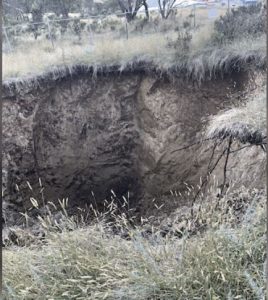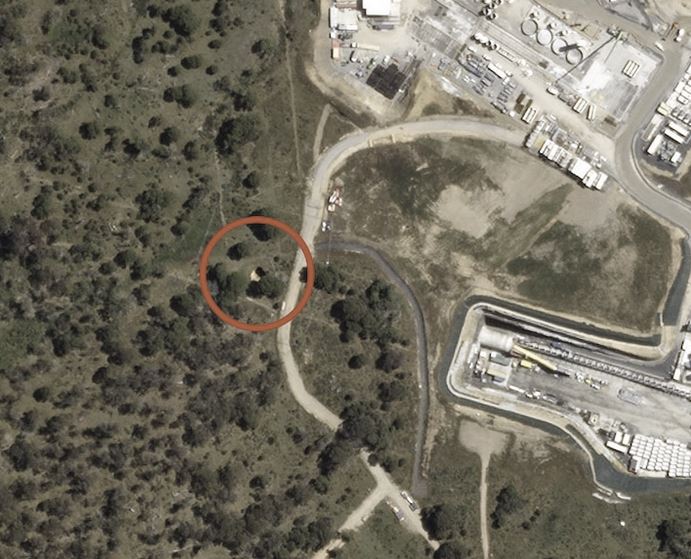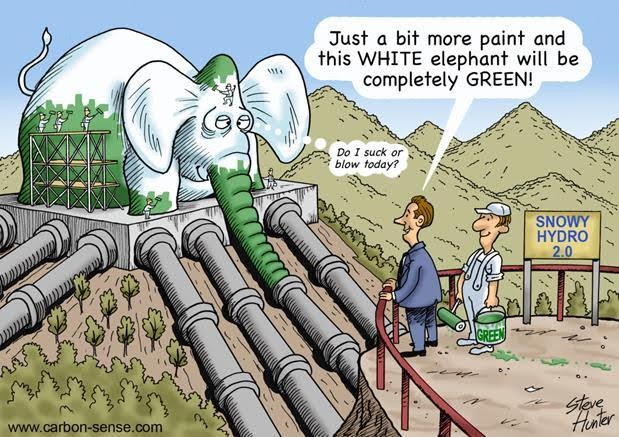Complexity has a price, and a renewables grid is a bit like a 240 volt moving Rubiks cube. Here we see an unnecessary project hit by a random factor that in turn will affect all the others, blowing out other costs and schedules.
Australia’s breakneck energy transition, driven like a crash test dummy by government subsidies, depends on finishing the massive pumped hydro scheme called Snowy 2.0. However it has hit another delay no one apparently saw coming.
“Australia’s biggest renewable energy project” is the $6 – 10 billion plan to pump water uphill so it can run back down again to generate electricity every time the windmills and solar panels suffer a catastrophic failure, which is nearly every day. The entire project is superfluous in a grid with coal power — as we know from the last fifty years when we didn’t need it.
Unfortunately a 2,400 ton Tunnel Boring Machine called Florence is quite stuck under a cave-in. According to the ABC she started ten months ago, and is supposed to be digging her way through 15 kilometres (10 miles) of mountain. The stuck bore can’t go forwards, but she can’t go back the way she came in either. The team has installed concrete reinforcing behind Florence as she moved and the concrete reinforcing effectively locks her in. It’s meant to be a one way trip.
So we have the irony of a machine designed to carve through miles of rock trapped inside a pile of sand. But it gets worse.
Last month, the Snowy Hydro Corporation said it was monitoring a “surface depression” above the boring machine. So a local man decided to go looking for the hole. As he says “technically, [Florence] should be 9 kilometers in but I thought I’d start about 3 kilometers out and start walking my way back in,” Mr Anderson said.
He spent four days looking for the hole only to find it, wow, barely 150 meters from the entrance.
His big shock was not the hole, but that the tunnel borer had barely achieved anything at all. These machines are designed to travel 30 to 50 meters a day, so this short tunnel is effectively one week’s work. The Snowy 2.0 scheme is supposed to be finished by December 2026, (just revised a week ago to Dec 2027) but at the current rate of 60 centimeters (2ft) a day it will take about 70 years to finish.
Looks like we will need those old coal plants for a bit longer. This delay could affect the rollout of new renewables.
Future options include jacking it up (described as “a huge task”) or disassembling Florence — all 143 meters and 2,400 tons — and extracting the machine in pieces. But if they do that, they will have to start the whole tunnel again. Still they hadn’t got very far…
You’d never know Australia was a top mining nation, eh?
Pumped Hydro is giant appliance that sucks electricity and gives you back some later. In a system with reliable baseload generators it is superfluous, redundant, and entirely unnecessary. It is an expense we don’t have to have, didn’t need, and don’t want to pay for. It can only make things more expensive than the system we used to have. Not only do we have to pay for the giant infrastructure, every day it operates we also throw away 20 – 30% of the electrons (so to speak) that go through it.
Snowy 2.0, is twice the cost, half the value, wastes a quarter of the energy, and wrecks the environment too
The mammoth pumped Hydro scheme is a $10 billion dollar disaster that will never pay for itself, is already being superseded by battery technology, and will scar the land, infect pristine alpine lakes, risk critically endangered species, damage fishing grounds, and breach the Biosecurity Act in a National park. (Where are the environmentalists, Tim Flannery? Does anyone care?)
UPDATE: A net-zero grid (without nuclear power) needs 23 Snowy 2.0 schemes for storage:
Australian Financial Review, April 2022
The Australian Energy Market Operator estimates that by 2050, without coal power plants, the National Electricity Market will require 45 GW and 620 gigawatt-hours of storage in all its forms to manage variations in fast-growing wind and solar generation, and to keep the grid stable. The figure rises steeply the closer the grid gets to 100 per cent renewables.
Snowy chief commercial officer Gordon Wymer points to an old estimate from ITK Services that some 8000 GWh – 23 times the capacity of Snowy 2.0 – could be needed for a fully renewable NEM, while Snowy’s own estimates signal that three to five times the capacity of 2.0 is needed for a 50-60 per cent renewable grid. (ITK principal David Leitch says his estimate is out of date and refers back to AEMO’s estimates.)
Snowy 2.0 needs huge transmission line construction as well (Humelink and VNI West):
There’s another $6 billion in transmission lines that we didn’t need for a coal fired grid.
Australian Financial Review, April 2022
“The cost/benefit analyses undertaken by TransGrid and also by AEMO makes quite clear that HumeLink plus Snowy 2.0 – they go together, the one is useless without the other – will destroy the wealth of New South Wales electricity consumers and Australian taxpayers,” says Bruce Mountain, director of longstanding Snowy 2.0 critic, Victoria Energy Policy Centre at Victoria University.
He says findings by AEMO and TransGrid that HumeLink provides net benefits only get to that conclusion by ignoring the cost of Snowy 2.0.
Broad argues the new transmission was required as long as 10 years ago, pointing to the bottlenecks in the system that prevent even the existing Snowy hydropower output reaching Melbourne and Sydney during demand spikes on hot summer days. Lack of grid capacity is also crimping new wind and solar generation, he notes, saying the critics are “missing the point” and getting caught up in “the politics of who’s doing what”.
Broad fears the $3.3 billion HumeLink will slide into 2027, while the $3 billion VNI West, which three years ago was expected by 2028, is now pencilled in for July 2031 in AEMO’s latest draft grid blueprint but may slip into 2032.
h/t David B


